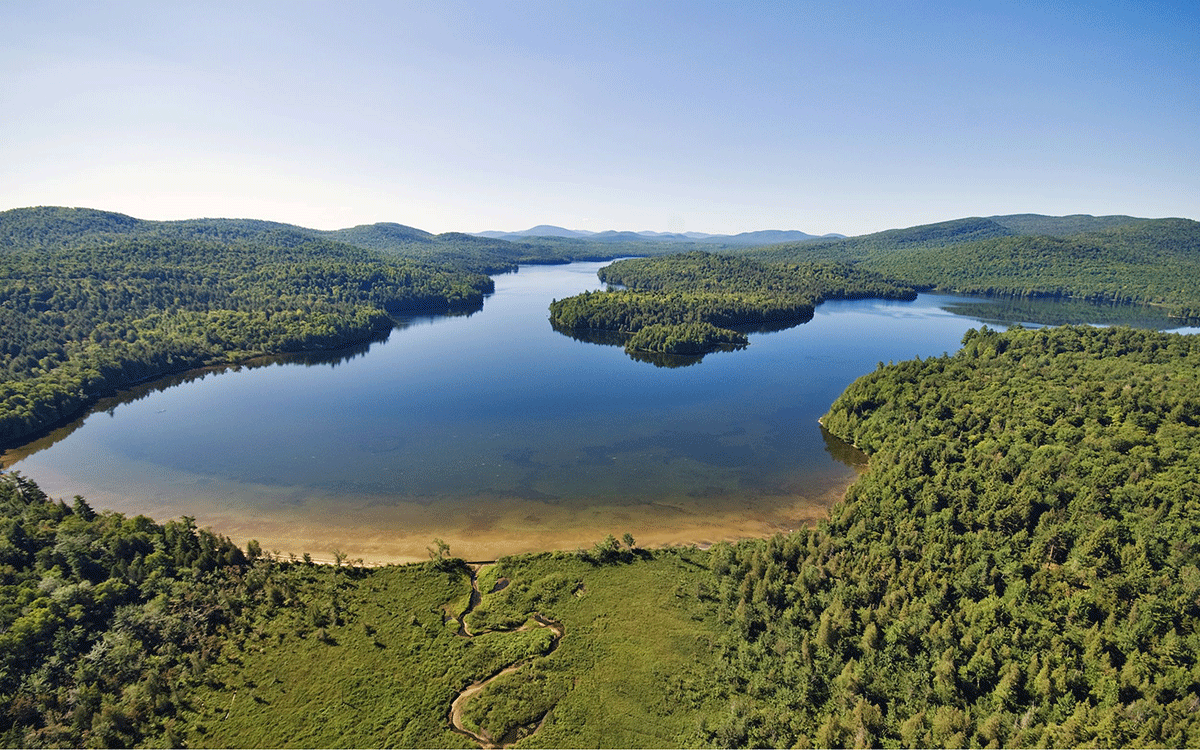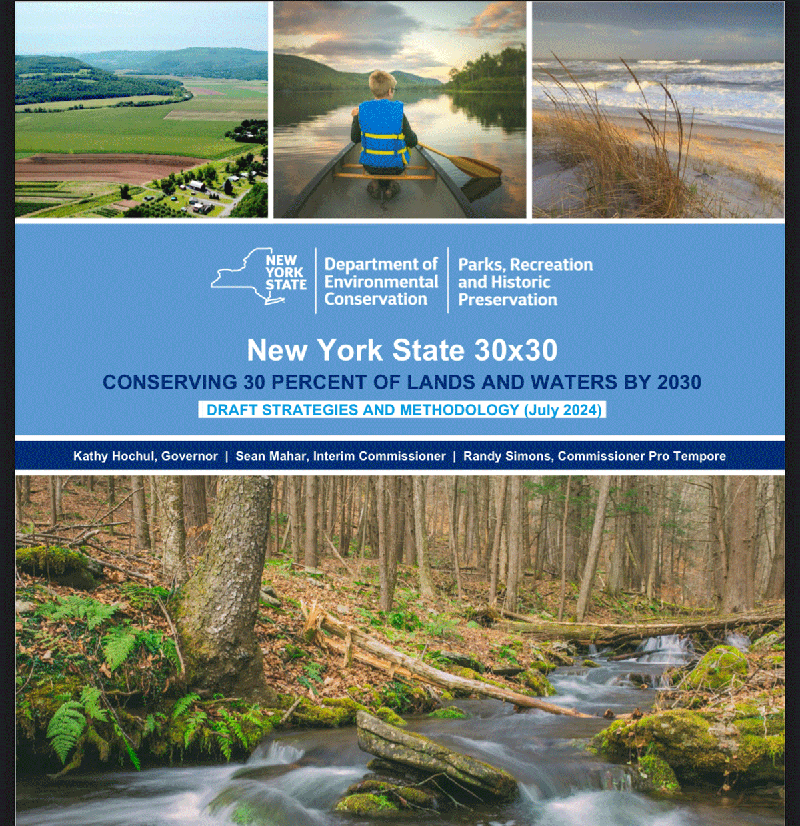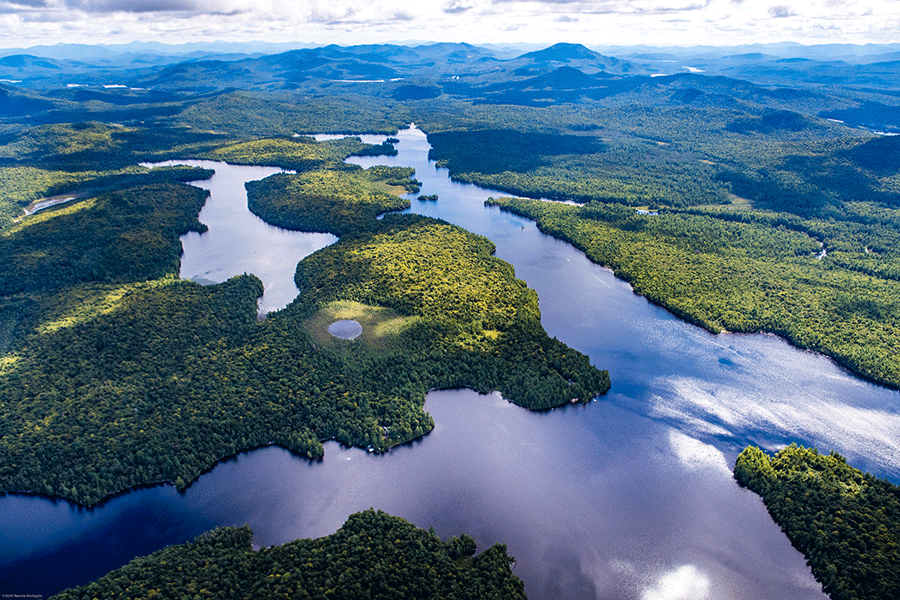The State of New York releases draft “Strategies and Methodology” for how it plans to meet goal of protecting 30% of NYS lands and waters by 2030.
On July 1, 2024, the New York State Department of Environmental Conservation (DEC) and Office of Parks, Recreation, and Historic Preservation (OPRHP) released their draft “strategies and methodology” for conserving lands to meet the 30 by 30 Act goal for land protection by 2030. DEC’s calculations call for protection of an additional 2,836,161 acres across New York State in order to reach the goal of protecting 30% of the state’s lands and inland waters. This marks the first time that the Hochul Administration and state environmental agencies have gone on the record about the urgent need for landscape level conservation action to protect at least 2.83 million acres in order to meet the State’s 30 by 30 goals and the State’s carbon reduction targets and goals for climate mitigation and resiliency.
The DEC-OPRHP report notes that the “conservation of lands and waters is one of the most important mechanisms by which to retain both biodiversity and habitat connectivity.” The report also recognizes that the State’s “outdoor recreation industry, which represented 248,000 jobs and over $25 billion in gross domestic product in 2021, is inextricably tied to the well-being of natural areas”.
PROTECT has advocated for greater State investments in the Adirondack Forest Preserve, through more land acquisitions, improved quality of hiking trails, better public education, and more Forest Rangers, scientific studies, and planning resources, to increase natural resource protection, enhance the experiences of visitors, and boost the economy of local communities.
DEC is taking public comments until August 30, 2024. There will also be two virtual public hearings on July 25 (1-3pm) and August 15 (6-8pm). Details about how to attend the hearings are online.
Background on the 30 by 30 Act
In 2022, Governor Kathy Hochul signed the “30 by 30” law that establishes a conservation goal for New York State of protecting 30% of the State’s “lands and inland waters” by the year 2030. This landmark environmental protection legislation enjoyed broad bipartisan support, passing the State Senate by a vote of 58 to 3, and the State Assembly by a vote of 137 to 8. The 30 by 30 law commits New York to do its part to reach a similar national goal established by President Joe Biden in 2021, to protect 30% of the nation’s lands and waters by 2030, and is a major step forward to protect New York’s open spaces, forests, and wetlands, which are cornerstones of the State’s long-term climate resilience and mitigation efforts.
At the end of 2023, Protect the Adirondacks released a new special report 20% in 2023: An Assessment of the New York State 30 by 30 Act that assessed the level of protected lands and waters in New York State in 2023, the types of lands protected, what constitutes protected lands, and the amount of land that needs to be protected by 2030 to reach the goal of protecting 30% of New York State’s lands and waters as set out in the 30 by 30 Act. PROTECT’s report found that over 3.1 million acres needed to be protected.
PROTECT’s Initial Reaction to the State’s Draft 30 by 30 Report
The DEC-OPRHP report estimates that “approximately 22 percent of New York State’s lands and waters are considered conserved.” According to the report, 21.88% or 7,639,505 acres have already been protected, and at least another 2,836,161 acres (out of the State’s total of 34,918,885 acres) need to be protected.
It’s welcome news that the State is now on record about the need to protect at least an additional 2.83 million acres across New York in order to meet the 30 by 30 Act goals. New York has a long and proud history of land protection. Governor George Pataki famously protected over 1 million acres during his 12 years in office. However, Governor Hochul will need to significantly increase her administration’s land protection efforts in order to meet the challenges that lie in front of the State. Since 2011, the administrations of Andrew Cuomo and Kathy Hochul have acquired just over 100,000 acres. The new DEC-OPRHP report states that 43,676 acres were acquired by the State over the last five years since 2019.
The DEC-OPRHP report also lays out a reasonably fair definition of protected lands in evaluating what lands are currently protected and what lands will count for protection in the future. The report defines protected lands as “land, water, and habitats” that have “permanent and persistent use restrictions”, as well as through regulatory frameworks (e.g., wetlands protections). The DEC-OPRHP report recognizes that some areas and actions (e.g., by schools, colleges, voluntary certification programs, pollinator gardens on highways and capped landfills, agricultural districts and assessments, and local zoning initiatives) help to meet the goals of the 30 by 30 Act, but the report does not directly count these lands and areas towards the acreage of protected areas.
However, we do take issue with the report counting “Forest Tax Law” lands, currently 385,992 acres, as protected lands. These lands are privately owned and voluntarily enrolled in tax reduction programs that landowners can opt out of at any time by paying a penalty. Therefore, these private lands are not permanently protected or restricted in use. We also plan to take a closer look at the report’s reliance on wetlands regulations and marine area restrictions for counting those lands (1.21 million acres of wetlands and 9,219 acres of marine areas) as protected.
New York State Open Space Conservation Plan
Concurrent with development of DEC-OPRHP’s report for the 30 by 30 Act, DEC is now in the process of updating the New York Open Space Conservation Plan (“Plan”). The Plan is a comprehensive statewide strategy that guides investment of land acquisition and protection funds from the Environmental Protection Fund and from the Clean Water, Clean Air and Green Jobs Environmental Bond Act of 2022 (Bond Act). As required by law, the Plan is updated periodically, relying heavily on the work of the nine Regional Advisory Committees.
The Regional Advisory Committees are currently meeting to identify categories and specific parcels of lands and waters for acquisition or long-term protection. We believe that acquiring lands inside the Adirondack Park is important for protecting ever-increasingly-precious and scarce wilderness areas, mitigating climate change, protecting species habitat for biological diversity, stopping fragmentation of forests, protecting watersheds around the numerous lakes and ponds in the Adirondacks, and creating attractive natural resource areas that draw residents and visitors for the communities inside the Park. We previously sent letters to the Region 5 and Region 6 Regional Advisory Committees with recommendations for general categories, and specific parcels, of lands to protect. Examples of specific parcels include the 4200-acre Greenwood Lake (Town of Fine), the 8001-acre Chaumont Swamp (Town of Clifton), and the railroad corridor from Saratoga County through Warren County to Tahawus in Essex County.
The 30 by 30 Act and the Plan work hand in hand to provide a path forward for the State’s planning and implementation of land protection across the State. The 30 by 30 Act needs to be a core underpinning for updating the Plan, giving the State a clear route to accomplish an aggressive program of land acquisition and protection necessary to achieve the Act’s land protection goals.









